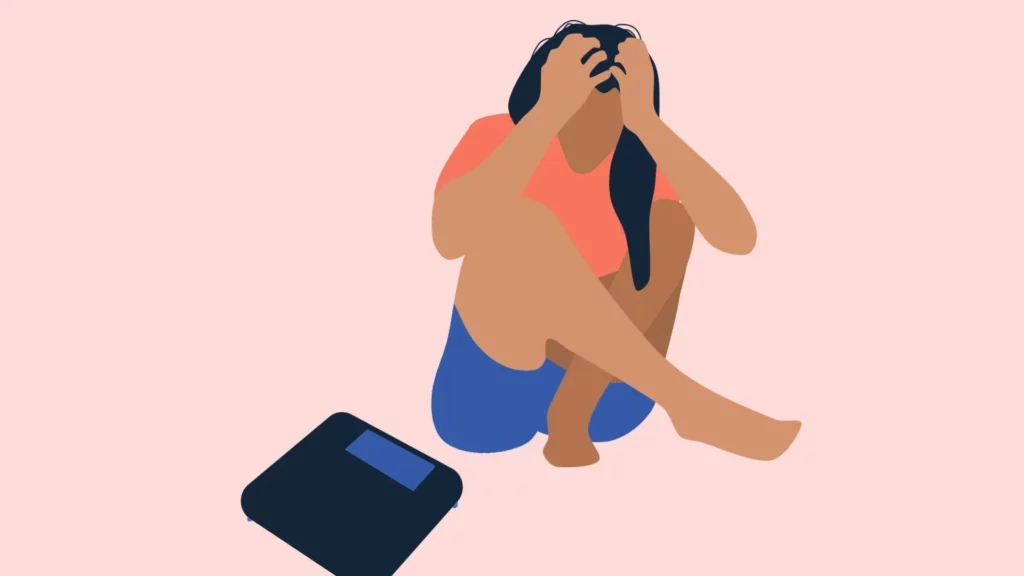When we think of eating disorders, the first thing that comes to mind is usually an image of a young woman who is rail-thin and obsessively counting calories. While this is often the case, there is more to the reality of eating disorders than just this stereotype. In this comprehensive blog post, we will take a look at all aspects of eating disorders in women. We will explore the different types of eating disorders, their causes and symptoms, and how they can be treated. If you or someone you know is struggling with an eating disorder, please don’t hesitate to reach out for help.
Contents
Defining Eating Disorders In Women
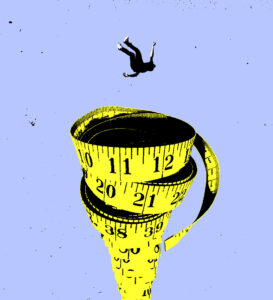 Eating disorders may be more common in women than in men, but the definition of an eating disorder does not discriminate against gender. An eating disorder is defined as “any abnormal eating habit that adversely affects one’s health or well-being.”
Eating disorders may be more common in women than in men, but the definition of an eating disorder does not discriminate against gender. An eating disorder is defined as “any abnormal eating habit that adversely affects one’s health or well-being.”
There are many different types of eating disorders, but they all share certain common features. Eating disorders typically involve an obsession with food and weight, as well as a distorted body image. Those suffering from an eating disorder will often go to extreme lengths to control their weight, even if it means harming themselves.
Eating disorders are an alarmingly disturbing and emerging aspect of mental illness in the world. It is estimated that about 24 million people of all ages and genders suffer from an eating disorder. Of these, about 20 million are women. Women of all ages, races, and sizes can develop an eating disorder.
Types
Eating disorders manifest in more than just one way. Typically, people only think of eating disorders as anorexia nervosa or bulimia nervosa, but there are actually many different types of eating disorders. These include:
- Anorexia Nervosa: This is the most well-known type of eating disorder characterized by severe calorie restriction and an intense fear of gaining weight. People with anorexia often have a distorted body image and see themselves as overweight, even when they are dangerously thin.
- Bulimia Nervosa: This type of eating disorder is characterized by bingeing on large amounts of food followed by purging through vomiting, use of laxatives, or excessive exercise. Like those with anorexia, people with bulimia often have a distorted body image and see themselves as overweight.
- Binge Eating Disorder: This type of eating disorder is characterized by regularly consuming large amounts of food in a short period of time followed by feelings of guilt and shame. People with binge eating disorders often have a difficult time controlling their eating habits and feel like they are powerless to stop.
- Orthorexia Nervosa: This is a less well-known type of eating disorder characterized by an obsession with healthy eating. People with orthorexia often become fixated on the nutrients in their food and the way it will affect their bodies. They may avoid certain food groups or only eat foods that they deem to be “healthy”.
- Pica: This type of eating disorder is characterized by the persistent eating of non-food items such as dirt, hair, or paint chips. People with pica often have a nutrient deficiency that causes them to crave non-food items.
- Rumination Disorder: This type of eating disorder is characterized by the regurgitation of food that has been previously swallowed. People with rumination disorder may regurgitate their food due to a feeling of dissatisfaction or because they are trying to avoid weight gain.
These are just a few of the many different types of eating disorders that exist. It’s important to remember that anyone can suffer from an eating disorder, no matter their age, race, or gender.
Warning Signs
Although different disorders have different warning signs, there are some common signs that may indicate that someone is suffering from an eating disorder. These include:
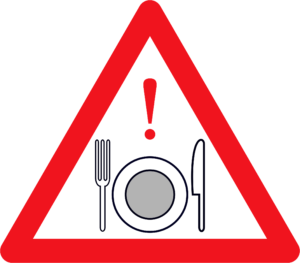
- drastic weight loss or gain
- changes in appetite
- frequent trips to the bathroom after meals
- excessive exercise
- making excuses not to eat
- missing meals or eating very little
- preoccupation with food or weight
- changes in mood, such as irritability or depression
- social isolation
If you are worried about someone you know, it’s important to reach out and talk to them. Eating disorders can be extremely harmful and even deadly, so it’s important to get help as soon as possible.
Causes
Eating disorders often develop in adolescence or young adulthood, but they can occur at any age. There are many different factors that may contribute to the development of an eating disorder. These may include the following.
Physical Factors
Physical factors that can contribute to male anorexia include:
- History of dieting or weight fluctuations: Women who have previously yo-yo dieted or experienced significant weight fluctuations are more likely to develop an eating disorder.
- Family history of eating disorders or other mental health disorders: Individuals with a family history of eating disorders or other mental health disorders are more likely to develop an eating disorder themselves.
- Brain chemistry: Abnormalities in brain chemistry can play a role in the development of an eating disorder. For example, serotonin is a chemical in the brain that helps regulate mood and appetite. Low levels of serotonin have a link with an increase in the risk of developing an eating disorder.
- Puberty: Puberty can be a difficult time for many girls. During this time, they may experience changes in their bodies that they are not comfortable with. This can lead to feelings of insecurity and anxiety, which may contribute to the development of an eating disorder.
- Other medical conditions: There are some medical conditions that can lead to weight loss and a preoccupation with body image. These include problems with the thyroid gland, digestive disorders, and cancer.
These are a few of the physical factors that can contribute to eating disorders in women. However, it is important to note that most men who suffer from an eating disorder do not have any underlying medical conditions.
Psychological factors
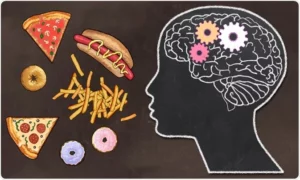
Psychological factors include:
- Body dysmorphic disorder: This is a mental health disorder characterized by an obsession with one or more perceived flaws in appearance. Individuals with this condition may spend a lot of time thinking about their appearance and comparing themselves to others. This can lead to feelings of low self-esteem and anxiety, which may trigger disordered eating behaviors.
- Need for control: Women who struggle with eating often feel like they are not in control of their lives. As a result, they may turn to food and their bodies as a way to gain a sense of control.
- Perfectionism: Many women have a tendency to be perfectionists. They often have high standards for themselves and feel like they must meet these standards in all aspects of their lives.
- Peer pressure: The pressure to be thin, attractive, and desirable can take a toll on women’s eating habits and exercise routines. This pressure may come from friends, family, the media, or society in general.
- Low self-esteem: Some women can have incredibly low self-esteem. This may be due to a number of factors, such as being overweight as a child or feeling like they don’t measure up to others.
- Trouble coping with stress or emotions: Women may have difficulty coping with stress or negative emotions. They may turn to food restrictions as a way to cope with these feelings.
- Unhealthy relationships with food and exercise: Women often have an unhealthy relationship with food and exercise. They may see food as the enemy and exercise as a way to burn calories and lose weight.
All of these psychological factors can contribute to the development of eating disorders. However, it is important to note that not all women will have all of these psychological factors.
Social Factors
Society and culture can also play a role in the development of male anorexia. Some of the social factors that can contribute to male anorexia include:
- Media: The media plays a role in the development of eating disorders in both men and women. The unrealistic body standards portrayed in the media can lead to feelings of inadequacy and low self-esteem. This can trigger disordered eating behaviors in individuals who are already predisposed to developing an eating disorder.
- Comparisons: Comparing oneself to others is a common human behavior. However, for individuals with eating disorders, comparisons can be dangerous. Constantly comparing oneself to others can lead to feelings of inadequacy and low self-esteem. This can trigger disordered eating behaviors in individuals who are already predisposed to developing an eating disorder.
- Peer pressure or cultural influences: There is an increasing pressure on men to have the “perfect” body. This pressure may come from friends, family, the media, or society in general. For women who are predisposed to developing an eating disorder, this pressure can trigger disordered eating behaviors.
- Gender roles: Traditional gender roles often dictate that women are meant to be thin and delicate. Their bodies are often seen as objects of desire. These traditional gender roles can lead to body dissatisfaction which can lead to feelings of inadequacy in individuals who do not fit these traditional gender roles.
It is important to remember that anyone can develop eating disorders, regardless of their background. If you are struggling, know that you are not alone. There are many resources available to help you on your road to recovery. With the right treatment, you can overcome this disorder and live a happy and healthy life.
Myths and Misconceptions
 Just like any other psychological/emotional disorder, there are a lot of myths and misconceptions surrounding eating disorders in women. It is important to dispel these myths in order to better understand the disorder.
Just like any other psychological/emotional disorder, there are a lot of myths and misconceptions surrounding eating disorders in women. It is important to dispel these myths in order to better understand the disorder.
- Eating disorders are a choice: This is one of the most common misconceptions about eating disorders. Eating disorders are not a choice. They are serious, life-threatening illnesses that require professional treatment.
- Eating disorders are only about food: Another common misconception about eating disorders is that they are only about food. While food may be the focus of the disorder, there are usually underlying psychological issues that contribute to the development of the disorder.
- Eating disorders only affect women: This is another common misconception about eating disorders. Eating disorders do not discriminate. They can affect anyone, regardless of their gender, age, race, or socioeconomic status.
- Eating disorders are a phase: Another misconception about eating disorders is that they are a phase. Eating disorders are not a phase. They are serious, life-threatening illnesses that require professional treatment.
- Eating disorders are not real illnesses: This is another common misconception about eating disorders. Eating disorders are real, serious illnesses with both psychological and physical consequences.
If you or someone you know is struggling with an eating disorder, please seek professional help. Eating disorders are serious, life-threatening illnesses that require professional treatment. With the right treatment, you can overcome this disorder and live a happy and healthy life.
Consequences
The consequences of eating disorders are an ugly reality that many women face. Eating disorders can have both psychological and physical consequences.
Physical consequences: The physical consequences of eating disorders are numerous. They can include:
- weight loss/gain
- muscle and bone weakness
- fatigue
- insomnia
- bleeding in gums/teeth
- irregularities in menstruation
- poor skin/hair/nails
- constipation/diarrhea
- abdominal pain
- heart problems
- kidney problems
- liver damage
- electrolyte imbalance
- anemia
Psychological consequences: The psychological consequences of eating disorders can be just as serious as the physical consequences. They can include:
- depression
- anxiety
- isolation
- obsessive thoughts about food/weight/body
- negative body image
- low self-esteem
- body dysmorphia
- suicidal thoughts
Eating disorders can have a devastating effect on a woman’s life. If you or someone you know is struggling with an eating disorder, please seek professional help.
Treatment Options
There are a number of treatment options available for individuals struggling with eating disorders. Some of these include the following.
Therapy
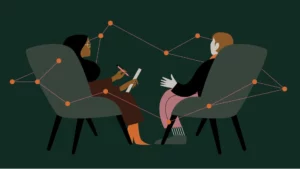 Psychological therapy is a key component of treatment for eating disorders. Therapy can help individuals identify and work through the underlying issues that contribute to their disordered eating behaviors. Some common and effective therapy types include:
Psychological therapy is a key component of treatment for eating disorders. Therapy can help individuals identify and work through the underlying issues that contribute to their disordered eating behaviors. Some common and effective therapy types include:
- Psychotherapy: This type of therapy helps individuals understand and work through the emotions and thoughts that are driving their disorder. This works by helping individuals to change their negative thinking patterns and behaviors.
- Cognitive-behavioral therapy (CBT): This is a type of therapy that focuses on helping individuals to identify and change the thoughts and behaviors that are associated with their disorder.
- Interpersonal psychotherapy (IPT): This is a type of therapy that helps individuals to understand and work through the interpersonal relationships that may be contributing to their disorder. IPT can help to improve communication skills and resolve conflict in relationships.
- Family-based therapy (FBT): This is a type of therapy that involves all members of the family in the treatment process. FBT has been found to be particularly effective in the treatment of anorexia in adolescents.
The right kind of therapy approach will be a mutual decision by the therapist and client.
Nutritional counseling
This is a type of therapy that helps individuals to develop healthy eating habits and achieve a healthy weight. Nutritional counseling can happen individually or as part of a group. A professional nutritionist or dietitian can provide this type of counseling. Some of the most common interventions used under this approach include:
- Meal planning: This involves working with a nutritionist or dietitian to plan healthy meals that meet the individual’s nutritional needs.
- Food journaling: This is a process of tracking the foods that are eaten, as well as feelings and thoughts about food and eating. This can help to identify patterns and triggers for disordered eating.
- Cooking classes: These classes can teach individuals how to cook healthy meals. They may also provide support and guidance on making healthy choices when eating out.
- Education about nutrition: This can help individuals to understand the importance of balanced nutrition as well as how to make healthy food choices.
- Support groups: These groups provide support and information for individuals with anorexia, as well as their families and friends.
The most suitable form of treatment will be decided by your respective healthcare provider.
Medication
There are a number of different types of medication that can help to treat eating disorders. These include:
- Antidepressants
- Anti-anxiety medications
- Mood stabilizers
- Antipsychotics
- Selective serotonin reuptake inhibitors (SSRIs)
Medication should always be used in conjunction with therapy. It is also important to keep in touch with your doctor for getting a valid prescription as well as to monitor the side effects of the medication on the individual.
Self Coping Strategies

There are a number of things that individuals can do to help themselves cope. Some of these include:
- Eating regular meals: This is one of the most important things that individuals can do to manage their disorder. It is important to eat three meals a day, as well as snacks in between meals.
- Avoiding trigger foods: Trigger foods are those that cause negative thoughts and emotions. These may be different for each individual, but some common trigger foods include sugary foods, fatty foods, and processed foods.
- Setting realistic goals: It is important to set realistic goals when it comes to weight loss and eating. Individuals should aim to lose no more than two pounds per week.
- Taking breaks: It is important to take breaks from dieting and exercise occasionally. This will help to prevent burnout and allow the body to rest and recover.
- Engaging in physical activity: Physical activity can help to release endorphins, which have mood-boosting effects. It is important to find an activity that you enjoy and that also does not feel like a punishment.
- Practicing relaxation techniques: This can help to reduce stress and anxiety levels. Some common relaxation techniques include activities such as yoga, meditation, and deep breathing exercises.
- Getting enough sleep: Sleep is important for overall health and well-being. It is recommended that individuals get at least eight hours of sleep per night.
- Joining a support group: Support groups provide information and support for individuals with anorexia, as well as their families and friends. It can also be helpful to talk to other individuals who are going through similar experiences.
These are a few ways in which eating disorders in women can be coped with. Treatment for eating disorders should be tailored to the individual’s needs and may involve a combination of different approaches. The most important thing is to start with recovery as soon as possible.
Conclusion
Conclusively, we can affirm that eating disorders in women are a very serious matter. It is important to be aware of the warning signs and to seek help if you or someone you know is struggling with an eating disorder. With proper treatment, recovery is possible. There are a number of different resources and support groups available to help individuals on their journey to recovery.
If you or someone you know is looking for psychological help, Therapy Mantra is here for you. We are the leading providers of online therapy and counseling. Our team of highly trained and experienced therapists can provide assistance at the most affordable rates. We also have a team of nutritionists providing nutritional counseling to manage food-related problems. Contact us today to learn more about our services. You may also visit our website to book an online therapy session or download our free Android or iOS app for more information.
